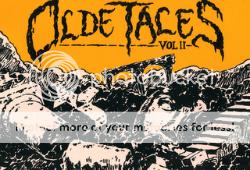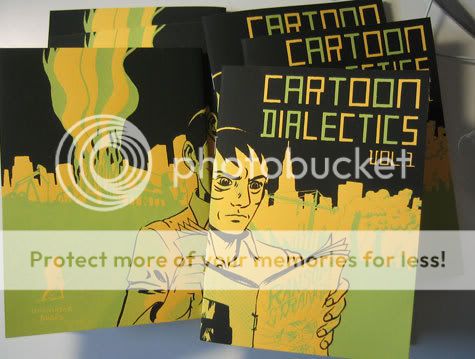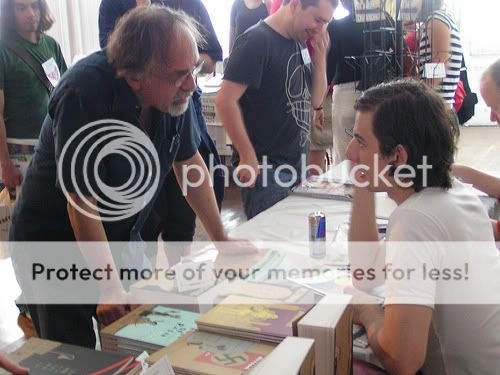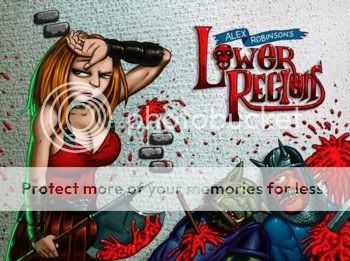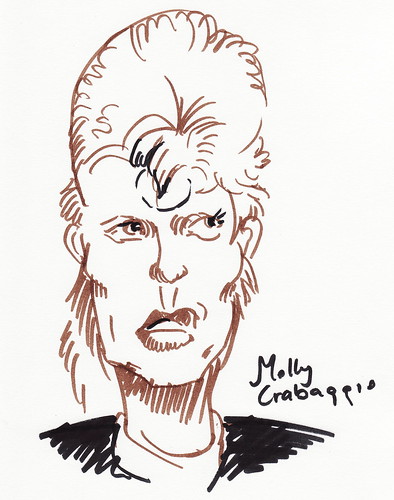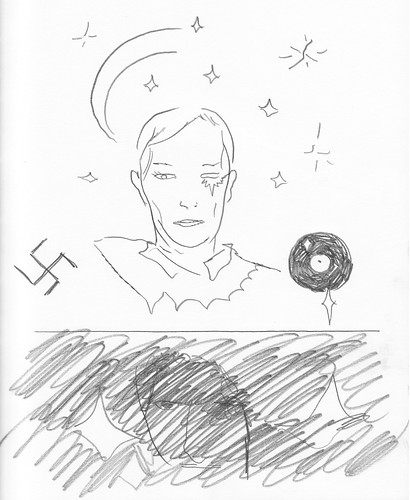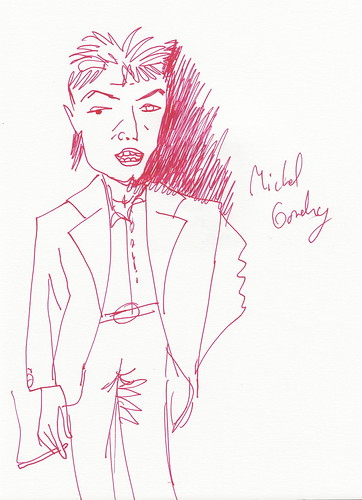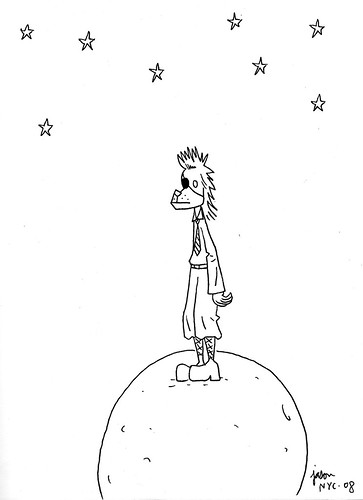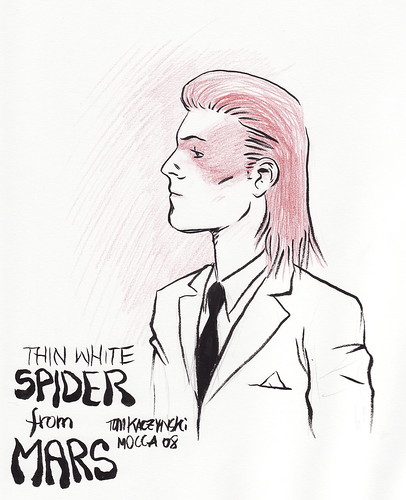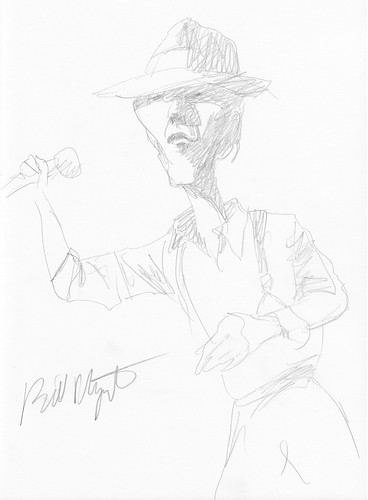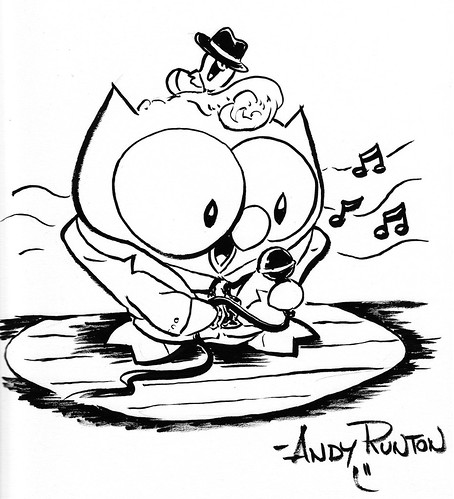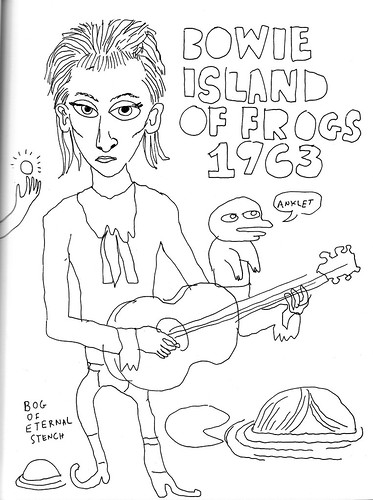Worn Tuff Elbow #1
Marc Bell, writer/artist
Fantagraphics Books, 2004
40 pages
$4.95
Originally written on January 3, 2005 for publication in The Comics Journal
Marc Bell is commonly associated with the deliberately lo-fi cartoonists centered around institutions like Sammy Harkham’s Kramers Ergot and Tom Devlin’s nigh-irreplaceable Highwater Books (of which the publication of Bell’s great graphic novel Shrimpy & Paul and Friends is arguably the crowning achievement). But like a pre–VH1 Fashion Awards Lenny Kravitz, Marc Bell is a man out of time, and I mean that in the best possible way. (Seriously, have you heard Mama Said?) With its maximalist energy, idiot-savant detail, and high-spirited insanity, Bell’s art is much more at home amid the 1960s undergrounds, right down to the Fleischeresque eyes of many of its characters and the ragtimey shuffles they frequently perform. But Bell’s comics have the added benefit (at least that’s what I think it is) of being largely gratuitous-obscenity-free, which basically means (like if Gary Panter’s Pee-Wee’s Playhouse sets had their own book) they’re the most enthusiastically, wondrously weird kids’ comics ever. You’re just unlikely to relinquish any copies you buy to an actual kid, is all.
Worn Tuff Elbow #1 is Bell’s latest sequential-art effort and the first issue of his new ongoing series at Fantagraphics (Bell being one of the House That RAW Built’s promising outreach efforts to the under-35 generation). The fact that it demonstrates Shrimpy & Paul was not a blow-your-wad burst of brilliance alone makes it notable, even if the comics weren’t so enjoyable on their own terms. Every page is packed with eyeball kicks both visual (a little fellow labeled “Just passin’ thru” appears in one panel, only (sure enough) to be gone by the next) and verbal (an inside-cover preview of book’s contents begins with the rib-ticklingly staccato intro “COMING SOON!!!” “(i.e.: in about 4 pages)” “TO THIS HERE COMIC BOOK” “(THAT IS IN YOUR MITTS RIGHT NOW!)”). Panels lengthen vertically to accentuate the larger-than-life owner of the titular elbow, and flatten out along the pages’ bottoms to depict the ground-level life of the little people whose oppression at the hands of a mad Frenchman (it’s that kinda book) form the core of the story. (Yes, there is a story!) Nonsensical, delightful, restorative comics.


